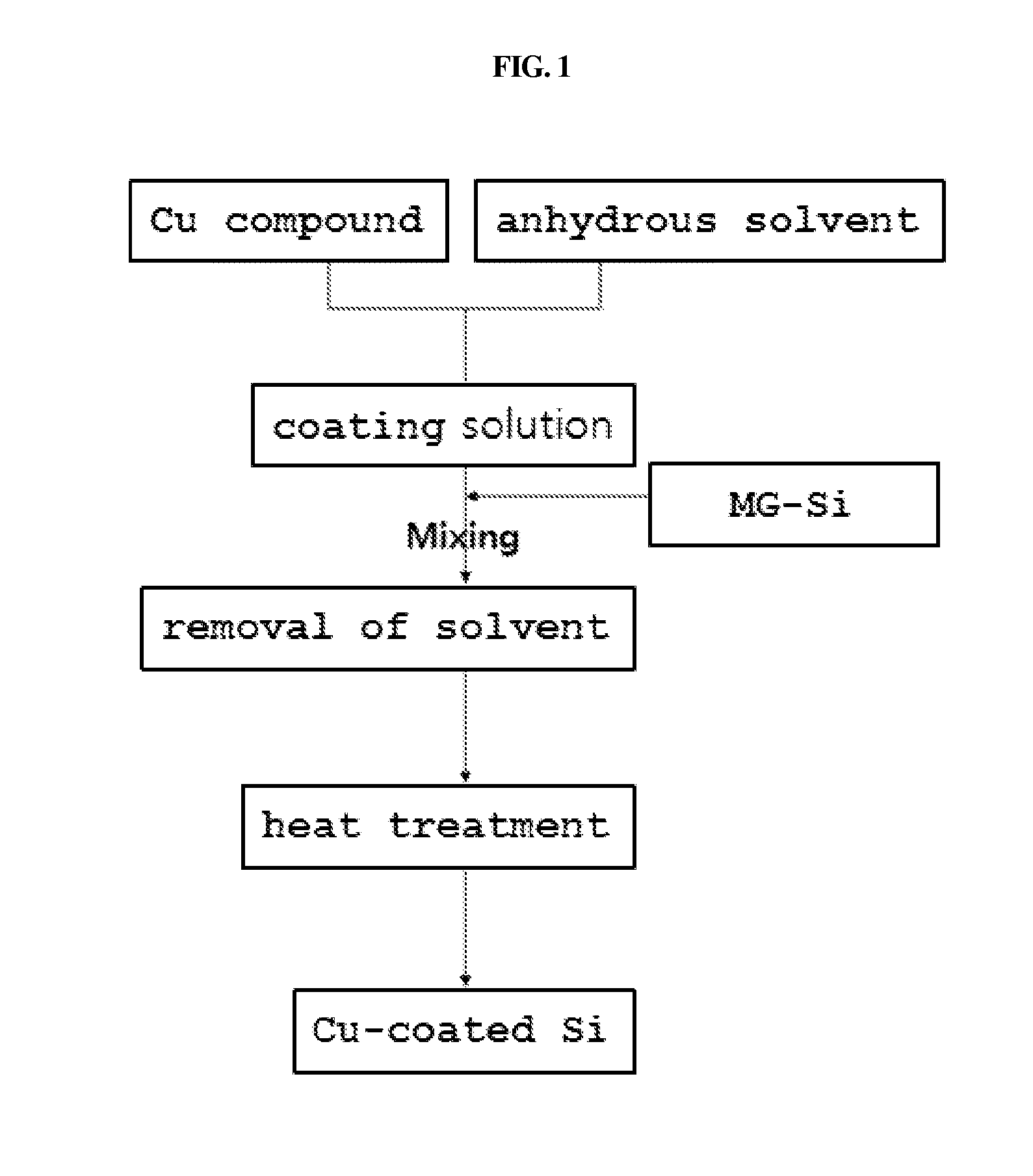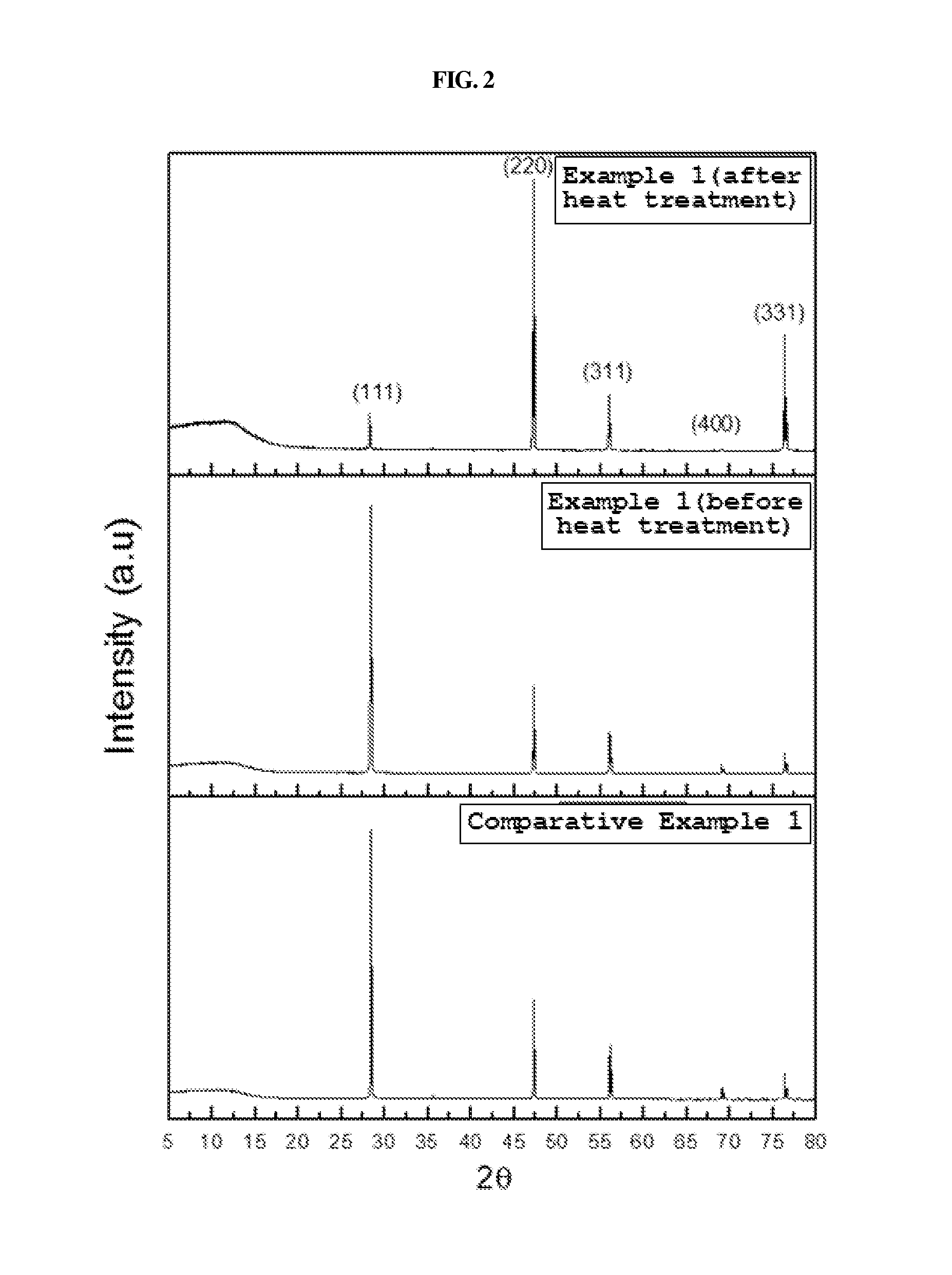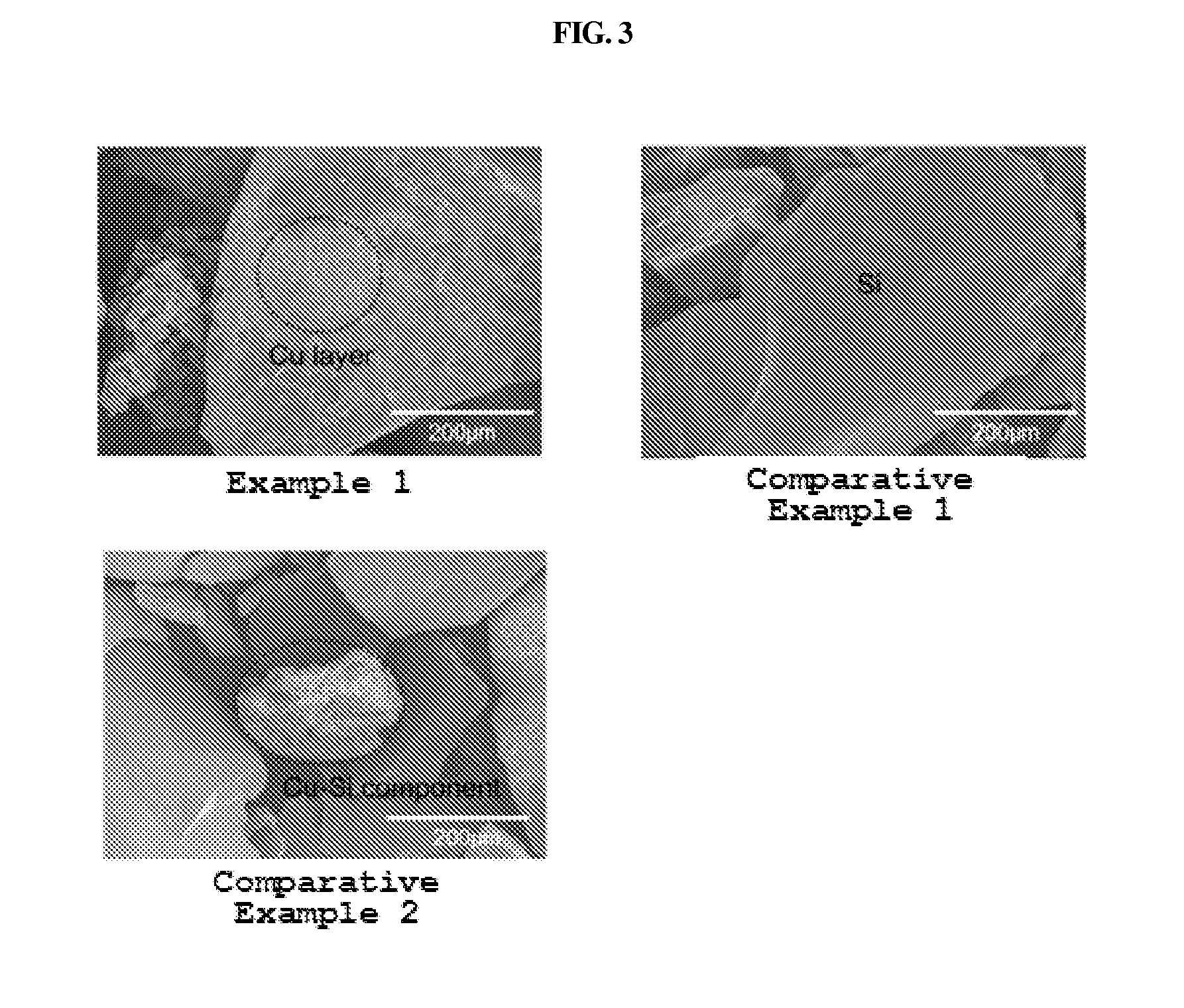Method of preparing trichlorosilane
a technology of trichlorosilane and trichlorosilane, which is applied in the field of preparing trichlorosilane, can solve the problems of difficult preparation process, low contribution to a commercial process, and inability to come into contact with the surface, so as to achieve continuous and efficient preparation and improve yield
- Summary
- Abstract
- Description
- Claims
- Application Information
AI Technical Summary
Benefits of technology
Problems solved by technology
Method used
Image
Examples
example 1
[0053]MG-Si having a purity of 99% or more and an average particle size of 250 μm, and 0.85 g of CuCl2 in an amount of 0.23 percent by weight (wt %) relative to the weight of Si based on the weight of Cu in CuCl2 were dissolved in 100 mL of a solvent (anhydrous ethanol) to prepare a solution, and thus MG-Si was mixed. The solvent was removed from the mixed solution using a rotary evaporator, thus forming a CuCl2 coating layer on the surface of Si. Subsequently, the temperature was elevated to 400 degrees Celsius (° C.) at a rate of 4° C. / min in a mixed gas atmosphere containing hydrogen and nitrogen at a weight ratio of 1:9. The Si having the coating layer was maintained at 400° C. for 1 hr, and then cooled to room temperature, thus obtaining MG-Si having Cu-silicide formed thereon.
[0054]In a fixed bed reactor, 170 g of the MG-Si having Cu-silicide formed thereon was placed, after which hydrochlorination was carried out for 2 to 10 hr under conditions of a temperature of 525° C., a ...
experimental example
Analysis of X-Ray Diffraction Pattern of MG-Si
[0057]To analyze whether Cu-silicide was formed on the surface of MG-Si, the results of observing the MG-Si of Example 1 and the MG-Si having no Cu compound of Comparative Example 1 by XRD are illustrated in FIG. 2.
[0058]As illustrated in FIG. 2, based on the results of analysis of the structure of Si coated with the Cu compound by a solution process before and after heat treatment, as Cu-silicide was formed through heat treatment, changes in the structure of MG-Si were observed.
[0059]Observation of Surface of MG-Si
[0060]The results of observing the surface of MG-Si before heat treatment in Example 1 and Comparative Examples 1 and 2 using SEM with 200× magnification are illustrated in FIG. 3. Also, the results of observing the heat treated surface of Example 1 using SEM and SEM-EDX are illustrated in FIG. 5. The results of measuring Example 1 and Comparative Examples 1 and 2 using SEM-EDX to analyze the components of Cu-silicide are illu...
PUM
 Login to View More
Login to View More Abstract
Description
Claims
Application Information
 Login to View More
Login to View More - R&D
- Intellectual Property
- Life Sciences
- Materials
- Tech Scout
- Unparalleled Data Quality
- Higher Quality Content
- 60% Fewer Hallucinations
Browse by: Latest US Patents, China's latest patents, Technical Efficacy Thesaurus, Application Domain, Technology Topic, Popular Technical Reports.
© 2025 PatSnap. All rights reserved.Legal|Privacy policy|Modern Slavery Act Transparency Statement|Sitemap|About US| Contact US: help@patsnap.com



